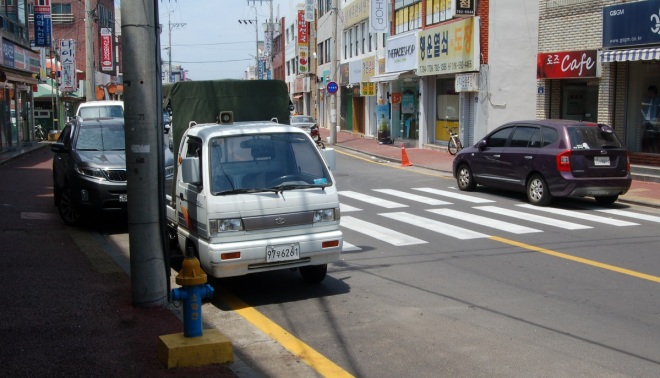I hope no-one considers it morbid that I regularly post photos of Jeju’s graves. They’re traditionally a dome of earth surrounded by a substantial volcanic stone wall. You see them in all sorts of places – in fields and villages, on hillsides, in woodland. They are a real feature of the landscape, although the tradition is no longer permitted.
This one is a short distance west of Museulpo, with views across the water to Gapado and Marado. In the other direction, there are views to Museulbong, Sangbansan and, further, Mt Halla. What a good place to be buried – assuming that views are of any use to the dead.



























